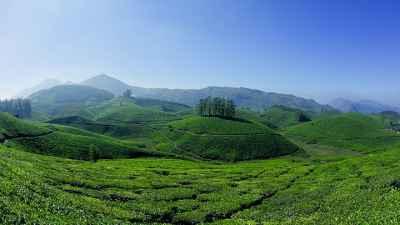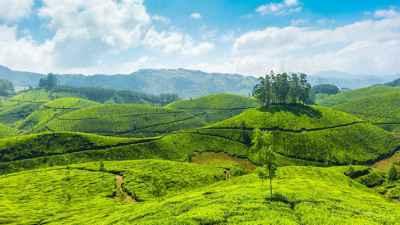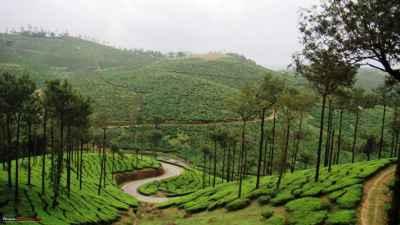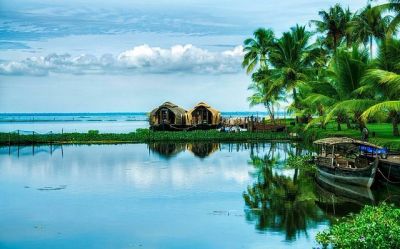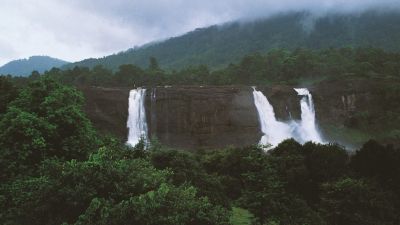The Intricate Floor Art of Kerala: Exploring Kolams and Rangolis
Kerala, the southern state of India, is well-known for its breathtaking natural beauty, serene backwaters, and rich cultural heritage. Among the many cultural traditions that Kerala is famous for, one particularly captivating art form stands out - the intricate floor art of Kerala known as Kolams and Rangolis.
The Origins of Kolams and Rangolis
Kolam and Rangoli are traditional art forms that are created using vibrant powdered or granulated rice, flowers, or colored powders. They have a long history and are deeply rooted in the cultural fabric of Kerala.
Kolams are usually created by women in Kerala, each morning outside their homes or in the courtyard. It is believed that these beautiful designs are a way to welcome prosperity and good luck into the household. The designs are created by connecting dots with straight or curved lines, creating intricate and symmetrical patterns.
Rangolis, on the other hand, are temporary floor art designs created during festivals and special occasions. They are made using a variety of materials such as colored rice powder, colored sand, or flower petals. Rangolis are often more complex and decorative, featuring elaborately detailed patterns and motifs.
The Beauty of Kolams and Rangolis
The art of Kolams and Rangolis showcases the immense talent and creativity of the artists. The designs range from simple geometric patterns to elaborate floral motifs and mythological figures. The vibrant colors and intricate details of these floor art forms are truly mesmerizing and can captivate anyone who lays eyes on them.
One of the most remarkable aspects of Kolams and Rangolis is that they are created purely from memory and improvisation. The artists do not use any tools or stencils, relying solely on their imagination and skill to bring these stunning designs to life. It is this spontaneity and creativity that make Kolams and Rangolis unique and awe-inspiring.
Kolams and Rangolis in Daily Life
In Kerala, Kolams are an integral part of daily life. The act of creating Kolams early in the morning is considered a form of meditation and an expression of devotion. It is believed to bring positive energy and ward off evil spirits from the household.
Kolams are not only limited to homes but can also be seen in temples, churches, and public spaces. In fact, during the festive season of Onam, entire streets and neighborhoods are adorned with elaborate Rangolis, creating a stunning visual spectacle that attracts visitors from all over the world.
Another interesting aspect of Kolams and Rangolis is that they are not limited to the floor. They can also be found on walls, doors, and even on pots and vessels. These versatile art forms add a touch of beauty and elegance to everyday life in Kerala.
Preserving the Tradition
Despite the modernization and changing lifestyles, the tradition of creating Kolams and Rangolis continues to thrive in Kerala. Efforts are being made to preserve this unique art form and pass it on to future generations.
Various cultural organizations and institutions organize workshops and competitions to encourage the practice of Kolams and Rangolis. These initiatives not only help in keeping the tradition alive but also provide a platform for artists to showcase their skills and creativity.
Additionally, the government has recognized the importance of Kolams and Rangolis in Kerala's cultural identity and has taken steps to protect and preserve this art form. It has been included in the curriculum of art education, ensuring that future generations learn and appreciate the beauty of Kolams and Rangolis.
In Conclusion
The intricate floor art of Kerala, Kolams, and Rangolis, is a testament to the rich cultural heritage of the state. These vibrant and elaborate designs not only add beauty to everyday life but also carry deep symbolic meanings. The tradition of creating Kolams and Rangolis is a celebration of creativity and devotion and continues to be an important part of Kerala's cultural fabric.
If you ever have the opportunity to witness these mesmerizing floor art forms in Kerala, make sure to take a moment to appreciate the skill and dedication that goes into creating them. And don't forget to capture some memories in your camera to cherish the beauty of Kolams and Rangolis forever!
Remember, sharing is caring! If you found this article informative and fascinating, make sure to share it with your friends and family.
Disclaimer : The information provided in this blog is for general informational purposes only. While we strive to keep the content accurate and updated, TravelSetu assumes no liability for errors or omissions. If you believe any part of this blog infringes your rights or causes concern, please notify us immediately at info[at]travelsetu[dot]com so that appropriate action can be taken.
